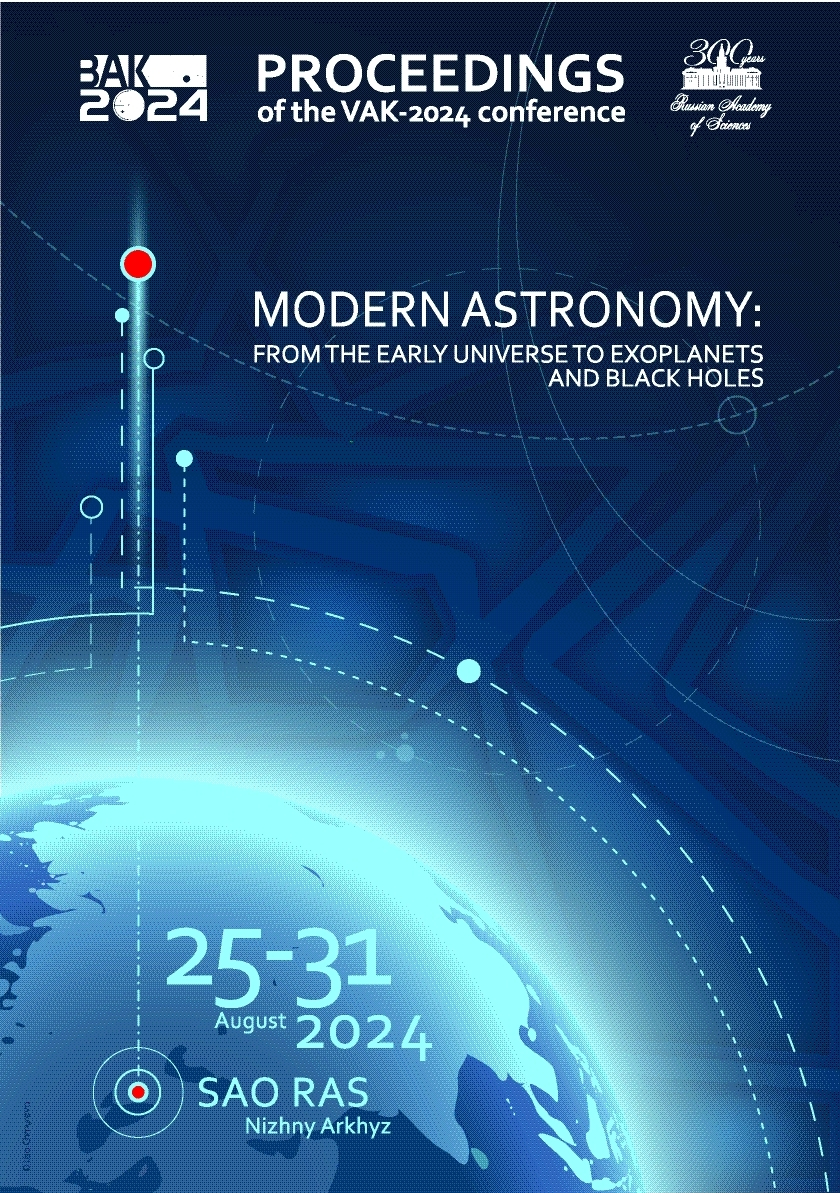UDC 53
UDC 520
UDC 521
UDC 523
UDC 524
UDC 52-1
UDC 52-6
CSCSTI 41.00
CSCSTI 29.35
CSCSTI 29.31
CSCSTI 29.33
CSCSTI 29.27
CSCSTI 29.05
Russian Classification of Professions by Education 03.06.01
Russian Classification of Professions by Education 03.05.01
Russian Classification of Professions by Education 03.04.03
Russian Library and Bibliographic Classification 2
Russian Library and Bibliographic Classification 223
Russian Trade and Bibliographic Classification 614
Russian Trade and Bibliographic Classification 6135
BISAC SCI004000 Astronomy
BISAC SCI005000 Physics / Astrophysics
By analysing the kinematics of the satellites of giant galaxies, it is possible to estimate the total mass of systems within 300 kpc. The Andromeda Galaxy (M 31) is the closest giant galaxy with a well known three-dimensional satellite system. Estimating its total mass is extremely important for understanding the halo distribution of dark matter, as well as for studying the kinematics and dynamics of the Local Group of galaxies. In this work we use the improvement of the projected mass method to take into account the three-dimensional distribution of the satellites, which allows us to obtain more reliable and accurate estimates of the total mass of the system. Using a sample of 29 satellites with precise distance measurements and radial velocities, we estimate the total mass of M 31 to be $M = (1.7\pm0.4) \times 10^{12}$ $M_{\odot}$ on a scale of 300 kpc. This result is in good agreement with the work of other studies.
galaxies: kinematics and dynamics, Local Group, dwarf
1. Bahcall J. and Tremaine S., 1981, The Astrophysical Journal, 244, p. 805
2. Veljanoski J., Ferguson A., Mackey A., et al., 2013, The Astrophysical Journal Letters, 768, id. L33
3. Watkins L., Evans N., An J.H., 2010, Monthly Notices of the Royal Astronomical Society, 406, p. 264





